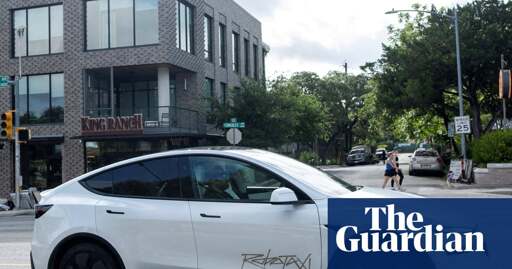The company’s rollout of its new driverless cars has gotten off to a wobbly start – and rival Waymo remains well ahead
After years of promising investors that millions of Tesla robotaxis would soon fill the streets, Elon Musk debuted his driverless car service in a limited public rollout in Austin, Texas. It did not go smoothly.
The 22 June launch initially appeared successful enough, with a flood of videos from pro-Tesla social media influencers praising the service and sharing footage of their rides. Musk celebrated it as a triumph, and the following day, Tesla’s stock rose nearly 10%.
What quickly became apparent, however, was that the same influencer videos Musk promoted also depicted the self-driving cars appearing to break traffic laws or struggle to properly function. By Tuesday, the National Highway Traffic Safety Administration (NHTSA) had opened an investigation into the service and requested information from Tesla on the incidents.



I mean the data IS sanitized, but not to the level that would have required certain human things to not happen.
Part of what’s led to its improvement over the years is better going through the data and removing bad things or properly labeling them.
That left turn that was cut to short makes it into the first set of training as a cursory look at it seemed okay, and then they see that cars are cutting turns to short. So they go through the data again and try to find examples of it and then label them properly so it doesn’t think it’s okay.
But that’s not a simple process, and then trying to only have certain good behaviors gets really hard because they’re actually very uncommon in normal driving because the bad behavior is socially acceptable.